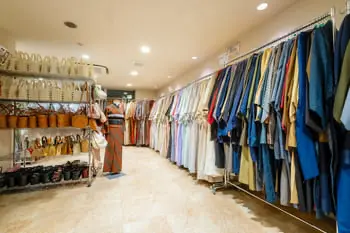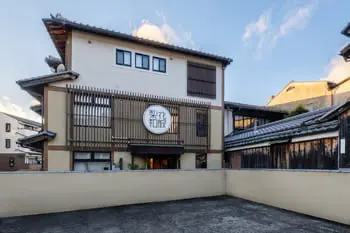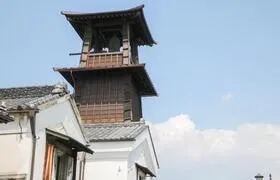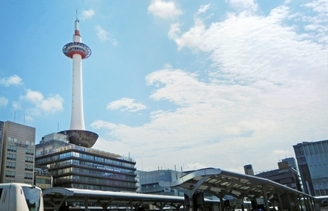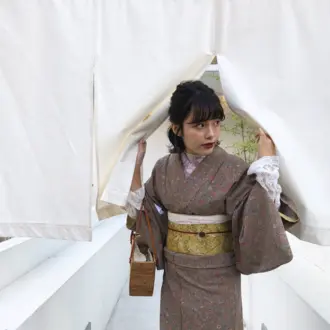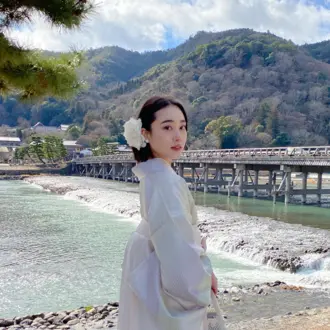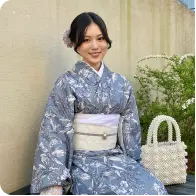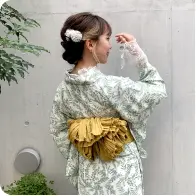How to avoid trouble when renting kimono in Kyoto?

The ancient city of Kyoto, with its charm that never tires visitors no matter the season.
For girls who want to stroll around in a kimono after renting one in Kyoto, it’s a highly anticipated tourist area.
However, for girls used to casual attire, traveling in a kimono can bring unexpected troubles.
Impromptu usage of rental services can lead to unplanned additional charges. You might fall at historic sites due to unfamiliar footwear. Encounters with groups of foreign tourists could result in your kimono getting soiled. Accidental spills during meals or makeup touch-ups are also common issues.
We will introduce check points to avoid troubles when renting a kimono.
※This article is supervised and created by Kyoto Kimono Rental Rikawafuku, operating seven stores nationwide.
Points to Note When Renting a Kimono in Kyoto

- Check when cancellation fees apply
- Verify the rental service details (like hair setting)
- Read the rental agreement thoroughly
- Ensure the Zori (traditional footwear) fits your foot size
- Plan for heat or cold
There are certain things to be cautious about when renting a kimono in Kyoto.
Students should carefully read the terms and conditions to check if student discounts apply.
Rental services might offer a ‘Set Plan’ that includes the kimono, undergarments, Zori, and Tabi (socks), or might include hair setting in their plans. It’s important to check the prices.
When using a student discount plan for kimono rental, remember to present your student ID.
Prices for kimono rentals vary depending on the quality of the kimono. Luxurious ones with gold and silver threads or made from high-quality fabrics will cost more. Antique kimonos tend to be more expensive as well.
Various options are available for kimono rentals, including extras like hair setting and photo sessions. It’s wise to check in advance if these services will incur additional charges.
When cancelling, be aware of potential cancellation fees. Some places offer free cancellation up to the day before, while others might charge for same-day cancellations.
There might be additional fees for extending the return time of the rented kimono. Make sure to read the terms and conditions on the rental shop’s website before making a contract.
When renting a kimono, it’s advisable to check beforehand if the rental shop offers sizes for petite or larger individuals.
Pay attention not only to the kimono but also the Zori. Ensure they fit your foot size and that the thong isn’t too tight.
When renting a kimono rental in Kyoto in spring, temperature regulation is important. In March, it can still be chilly, so wearing thermal underwear beneath a thin kimono is advisable. Choose undergarments with a deep neckline for the top and leggings for the bottom to ensure they don’t show beneath the kimono.
Continuing with the translation while maintaining the HTML structure:
—
Be Careful About How You Walk When Renting a Kimono in Kyoto
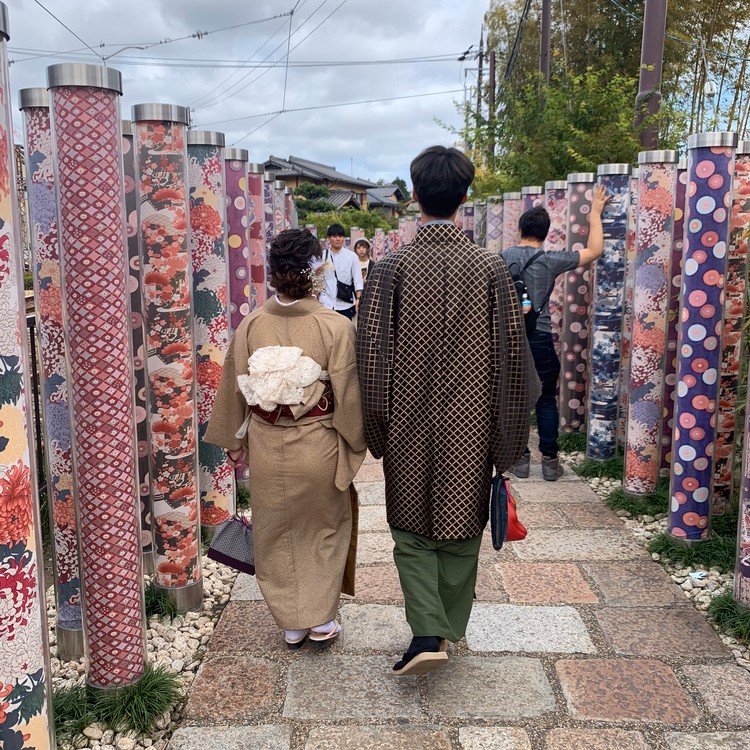
- Walk with your legs closer together and slow down your pace
- Be careful when climbing stairs
When visiting popular spots in Kyoto for sightseeing, there are important points to be cautious of to avoid troubles.
Kyoto has many slopes, stairs, and gravel paths, making it easy to trip when walking in a kimono.
Famous spots include the Ninen-zaka (Two Years Slope) and Sannei-zaka (Three Years Slope) leading to Kiyomizu Temple. There are also Chawan-zaka (Teapot Slope), Kibune-zaka, and Kinukake-no-Michi. Walking in Zori can be surprisingly tiring and painful.
Usually, when wearing Western clothes, it’s easy to stride widely and walk quickly, but in a kimono, it’s necessary to walk with your legs closer together and at a slower pace.
Another tourist spot in Kyoto with slopes is the Fushimi Inari Shrine, famous for its Senbon Torii (thousands of torii gates) and popular among foreigners. The gentle stairs there make it relatively safe to explore in a kimono rented from Gion Store.
The World Heritage Site Kiyomizu Temple also has many stairs. When climbing, lift your kimono hem to prevent soiling.
Kyoto isn’t just slopes and stairs; it has many gravel paths too. The Kyoto Imperial Palace and Nijo Castle are laid with gravel, so be very careful not to trip.
Damaging a kimono by falling may lead to additional charges from the rental shop. It’s good to research the rental shop’s policy in advance.
Be Careful with Makeup Touch-ups When Renting a Kimono in Kyoto

One thing to be cautious of when renting a kimono in Kyoto is staining the half-collar or cuffs of the Nagajuban (under-kimono) with lipstick or foundation. Ladies, make sure your fingertips are free from foundation or lipstick after touching up your makeup post-meal.
Loose powder can also be a cause of kimono stains.
Be mindful that nail polish or gel nails, once stained on the kimono, are not easy to remove. Perfumes and colognes may also transfer their scent to the kimono, so it’s better to avoid them.
Foundation and lipstick stains are oil-based, so use a tissue or cloth to transfer the oil to a blotter before spot-cleaning with benzene. Amateur attempts can spread the stain, so it’s better to return the kimono to the rental shop promptly.
Consider joining the kimono insurance offered by rental shops for such unforeseen circumstances.
Kimono insurance covers light stains, but heavy stains or difficult-to-remove marks may incur additional cleaning or maintenance fees.
Does Wearing a Kimono in Kyoto Make You Tired?
When considering renting a kimono in Kyoto, it’s important to think about fatigue.
While choosing a kimono rental shop, it’s easy to focus on cuteness or price.
However, remember that you’re in Kyoto primarily for sightseeing, and renting a kimono is just a part of that experience.
If the shop is far from the station, you may end up too tired to enjoy your overall sightseeing experience.
Hence, ease of walking, comfortable dressing, and proximity to the station are crucial elements that are often overlooked!
Continuing with the translation while maintaining the HTML structure:
—
Are You Mindful of Dining Etiquette When Renting a Kimono in Kyoto?
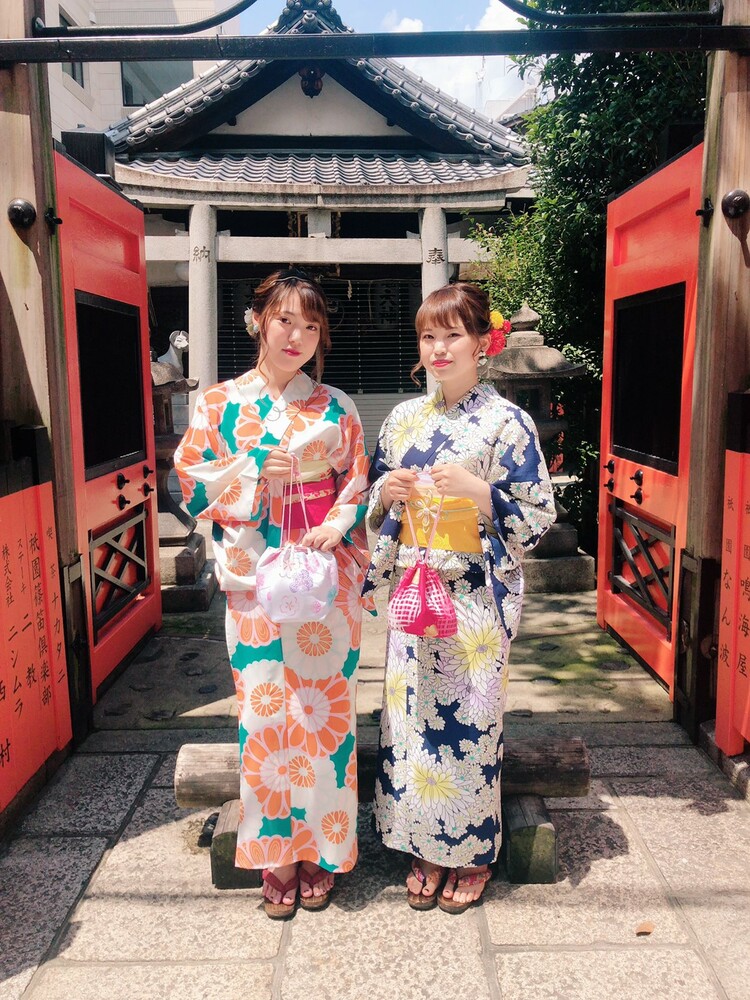
When you rent a kimono in Kyoto and stroll around Gion or Arashiyama, you’ll encounter trendy and modern cafes and restaurants. The charm of Kyoto lies in the harmony between its ancient beauty and modernity.
Ever thought of splurging on French or Italian for lunch while in a rented kimono? Are you mindful of the kimono during these meals?
Eating in a kimono can be challenging and prone to spills compared to regular clothes. It’s important to be mindful, like placing a large handkerchief on your lap, but collars and cuffs are especially prone to getting dirty.
In case you accidentally stain the kimono with food or drink, aim to minimize the damage.
As a first aid measure, if a stain occurs, respond quickly and gently dab with water without rubbing. There are water-soluble and oil-soluble types of stains. Water-soluble ones, like soy sauce, juice, or coffee, are best handled by placing a cloth underneath and gently tapping with a wet cloth to transfer the stain to the towel underneath. Oil-soluble stains, like mayonnaise or meat sauce, are more stubborn.
Be particularly cautious with wine. Stains from red wine or fruits containing dyes are difficult to remove. Instead of trying to fix it yourself, it’s preferable to return the kimono to the rental shop.
You might be charged for cleaning by the kimono rental shop if you return a stained kimono.
Always check the rental agreement beforehand.
If the shop offers kimono insurance, joining it might mean you won’t need to pay for cleaning. However, if the damage or stain is severe and exceeds the insurance limit, you might face a substantial charge.
To avoid serious issues, carefully read the rental shop’s terms and conditions available on their website.
About the Author
Rikawafuku Kimono Rental operates four shops in Kyoto, in the Arashiyama, Gion, Kiyomizu Temple, and Kyoto Station areas, with an annual usage record of over 87,000 customers in 2021!
They offer affordable dressing plans starting from 4000 yen, and hair-set plans from 5000 yen.
Conveniently located near popular tourist spots like Togetsukyo Bridge, Kiyomizu Temple, Yasaka Koshindo, and Yasaka Shrine!
Rikawafuku Kimono Rental in Kyoto
Rikawafuku Kimono Rental Gion Store
Rikawafuku Kimono Rental Arashiyama Store
Rikawafuku Kimono Rental Kiyomizu Temple Store
Rikawafuku Kimono Rental Kyoto Station Front Store

